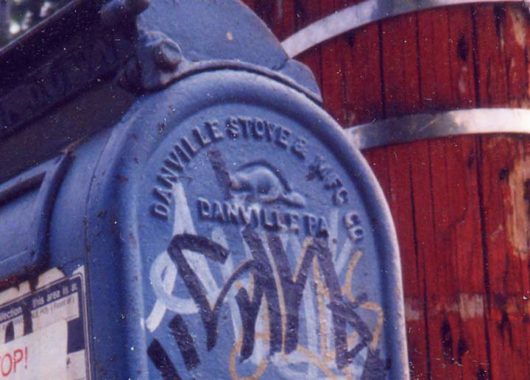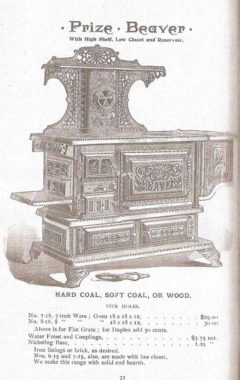
March 2019 marks Forgotten New York’s 20th anniversary. To mark the occasion, I’ve re-scanned about 150 key images from the early days of FNY from 35MM prints. In the early days, when people including me were accessing FNY with dial-up modems, I had to save photos really small — in some cases, just 4″ across. I couldn’t find all those early photos — I think I foolishly discarded some along the way — but all month, and into April, I’ll be picking out some and showing the newly scanned versions.
Back in the Dawn of Forgotten New York in 1998 and 1999, there were still a number of pole-mounted slot mailboxes like this one, at Independence Avenue and West 254th Street in Riverdale. Even then, they were getting quite rare but if you look at NYC photos from the 1940s and previous, you’ll see that this style of small mailbox, with just a small slot to insert mail, was nearly ubiquitous, whether mounted on lampposts or telephones, or even on pebbly concrete posts. The big boxy mailboxes seen these days appeared in the 1940s and eventually supplanted their smaller cousins. You can check their dates of installation, and sometimes even the manufacturer, as each is embossed near the bottom of one side of the box.
I found a cluster of them in Riverdale; there were also some in neighborhoods like Richmond Valley and Rosebank ion Staten Island, and Floral Park in Queens. Note one slot mailbox remains other than as a historical artifact at a museum.
As far as the slots go, these fell out of favor because people wanted to mail bulky items without going to the post office — the old man had a postal scale at home, and measured the weight of items he wanted to mail. The heavier it was, the more stamps he used. To be sure, he made frequent trips to the post office, but if it could be dropped in one of the big boxes, he did so. These small mailboxes were for letters only — even the slots were marked “letters.”
Of late, with increased mail fraud and terrorism, the Post Office has moved once again to eiminate the practice of mailing packages and bulky items from these boxes, and has begun to install big boxes featuring only small slots for letters — not wide, pull-handled openings. I doubt, though, that the PO will bring back these small, pole-mounted boxes; would be a nice touch, though.

Here’s a little detail I didn’t notice or pay attention to when I first shot the photo in 1999: the manufacturer, Danville Stove & Manufacturing, Danville, Pennsylvania. Danville is a town of about 5000 located on the Susquehanna River, about midway between Harrisburg and Wilkes-Barre along US 11. Beavers are plentiful in the area which was the site of European colonizers in the 1600s, who traded beaver pelts with the native Delaware Indians. The riches of the fur trade led to the Beaver Wars fought between Indian tribes and their European allies — considered by historians to be even bloodier than the Civil War for the dubious honor of the worst war ever fought on the North American continent.
As the 18th and 19th centuries progressed, coal and iron deposits were located that became the bedrock of economic activity in Pennsylvania. Danville became a major iron mill town and several freight railroads carrying iron ore and anthracite running by the Danville area.

The Danville Stove company was founded in 1882, turning out coal ranges, furnaces and living room heaters. The company was located on Beaver Street in Danville and one of its flagship products was the Danville Beaver coal range shown above.
Kitchen ranges were nicely finished with enamel surfaces and nickel and chrome trim. As the use of gas for heating & cooking became more popular the ranges were made to use the gas. These stoves were called ‘combination stoves’. Unfortunately the company did not change its patterns for electric ranges and the stove business gradually discontinued. [Montour County Historical Society]
For several years, after the stove business declined, Danville produced the slot mailboxes used throughout the country, but by 1943 the company was pretty much out of business and was acquired by Kennedy Van Saun in 1951. Some of the mailboxes have turned up on eBay.
Check out the ForgottenBook, take a look at the gift shop, and as always, “comment…as you see fit.”
3/20/19


1 comment
As best I can determine, Kennedy Van Saun has been doneski since the early 1970’s.